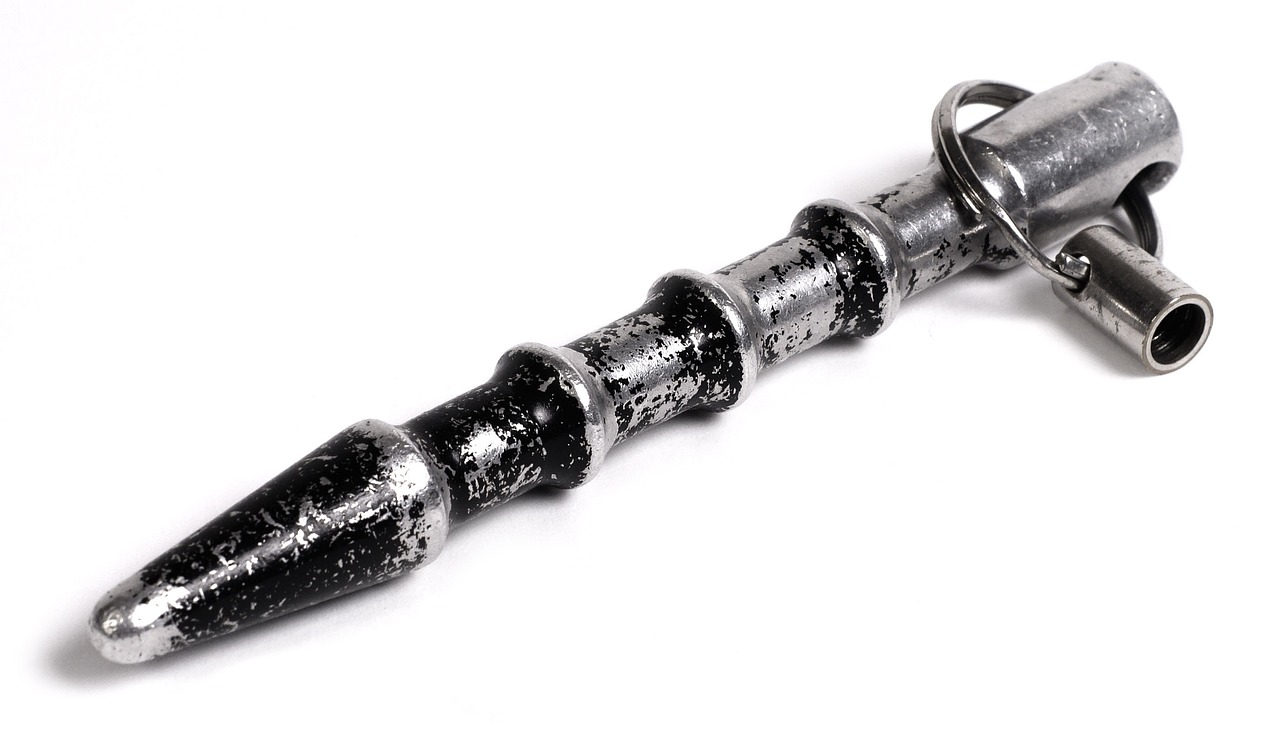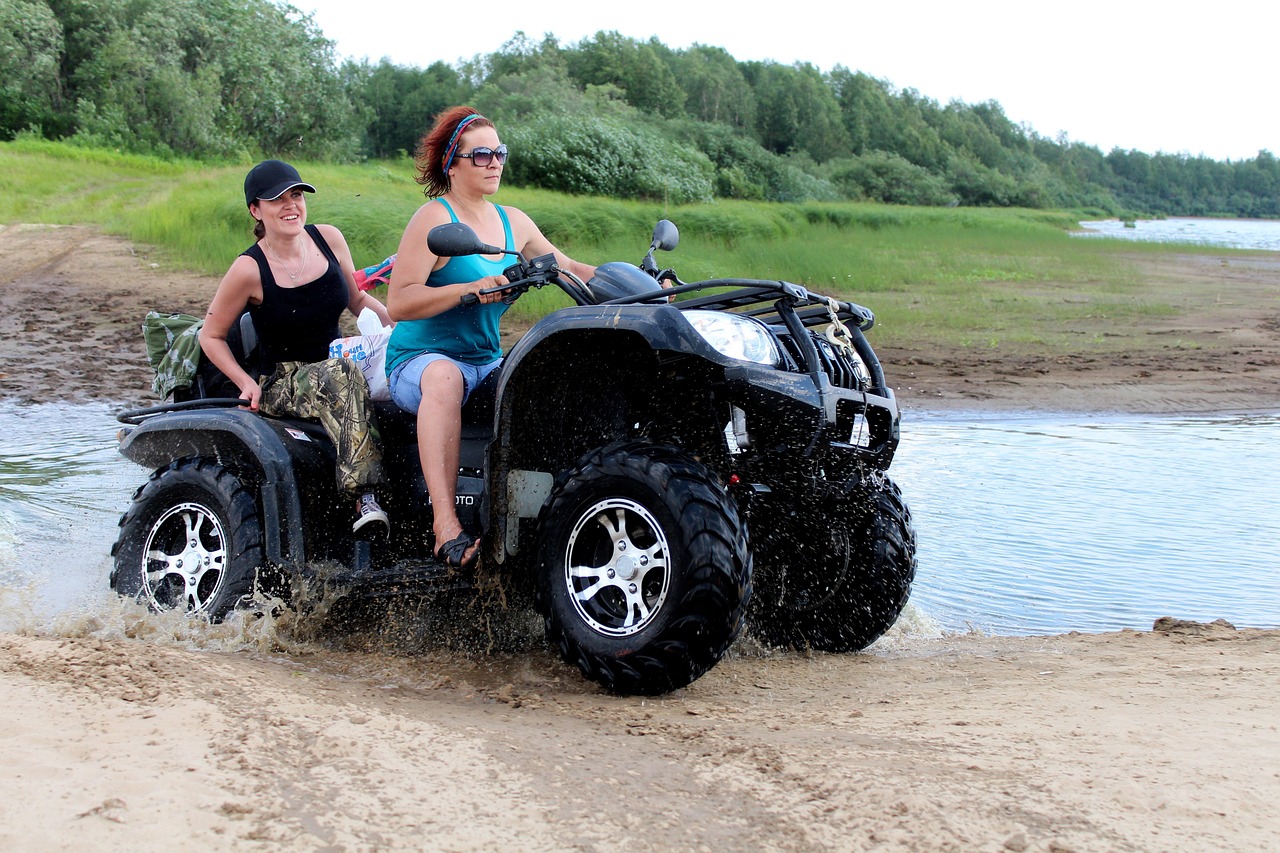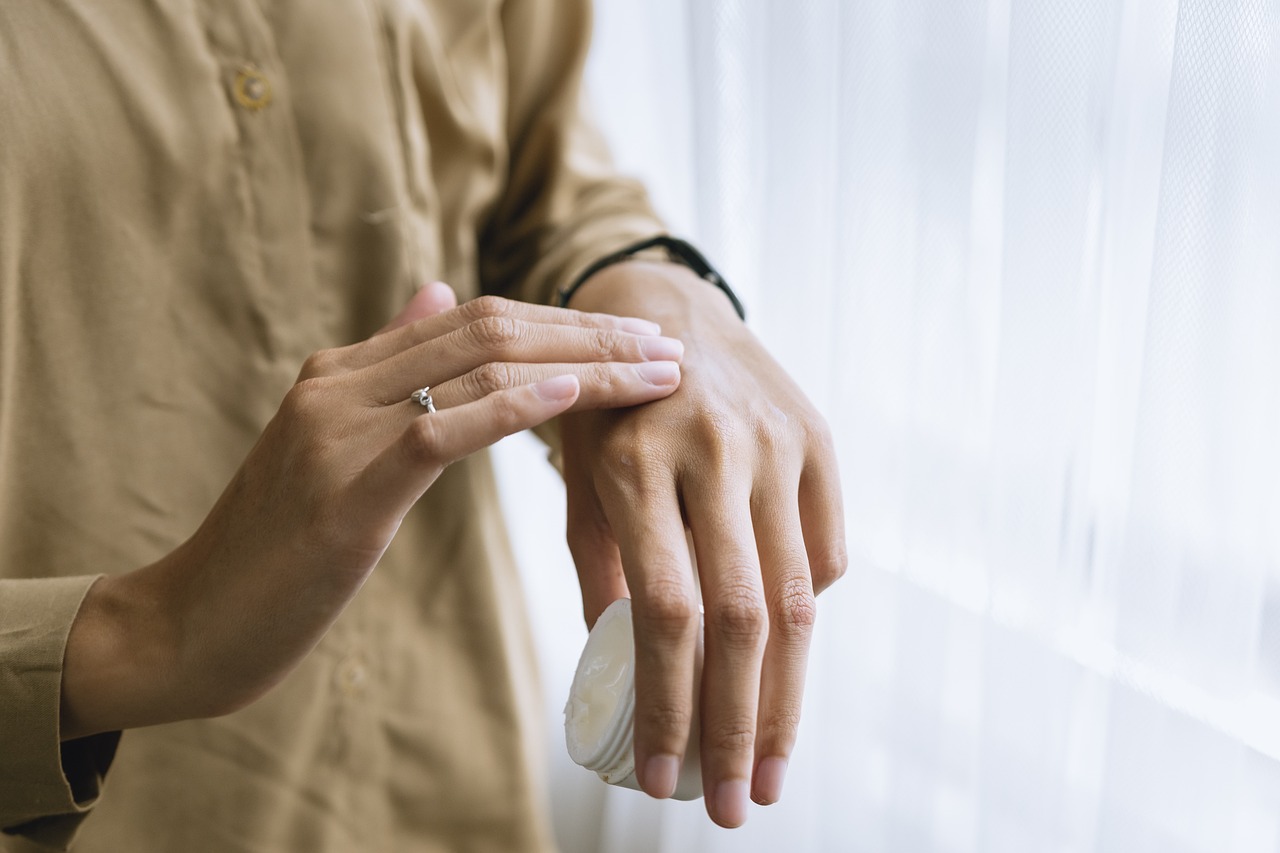Effective Self-defence Techniques Against Robbery Attempts
In today's world, the unsettling reality is that robbery attempts can happen to anyone, anywhere. Whether you're walking home late at night or simply running errands during the day, it's essential to equip yourself with effective self-defence techniques. This article dives deep into practical strategies that not only enhance your physical readiness but also sharpen your mental acuity. Think of self-defence as a safety net; the more you know, the safer you feel. Let's explore how you can protect yourself and stay one step ahead of potential threats!
Recognizing the various types of robbery scenarios can significantly enhance your preparedness. Robberies can occur in numerous settings, from dark alleyways to crowded public spaces. Understanding how these situations typically unfold is crucial. For instance, imagine you're in a parking lot, and you notice someone loitering around your car. This could be a warning sign. By being aware of such scenarios, you can anticipate potential threats and react accordingly. Common robbery types include:
- Street Robberies: Often occur in public spaces and can involve muggings.
- Home Invasions: These happen when intruders break into your home, often while you're there.
- Online Scams: Increasingly common, these can lead to financial theft.
By familiarizing yourself with these scenarios, you can better prepare for the unexpected.
Situational awareness is your first line of defence against robbery. It’s about being conscious of your surroundings and recognizing warning signs that may indicate a potential threat. Imagine you’re in a café, and you notice someone acting suspiciously, perhaps staring at you or your belongings. This is your cue to be alert. Always ask yourself: “What’s happening around me?” Being aware can mean the difference between avoiding a situation entirely or being caught off-guard. Here are some tips to enhance your situational awareness:
- Keep your head up and avoid distractions like your phone.
- Trust your instincts; if something feels off, it probably is.
- Make eye contact with those around you; it can deter potential attackers.
By honing your situational awareness, you can significantly reduce your risk of becoming a target.
When it comes to physical self-defence, knowing a few key techniques can empower you to fend off an attacker. Think of your body as a tool; with the right knowledge, you can use it effectively. The goal is to incapacitate your assailant long enough to escape. Here are two crucial aspects of physical self-defence:
Striking techniques, such as punches and kicks, are vital in self-defence. Effective striking methods can quickly incapacitate an attacker, giving you the chance to escape. Focus on:
- Punches: Aim for vulnerable areas like the nose or jaw.
- Kicks: Target the knees or groin for maximum impact.
Practice these techniques regularly to build muscle memory; when the moment comes, you’ll react instinctively.
Understanding how to escape from various holds is equally essential. Attackers may try to grab you or put you in a chokehold. Knowing how to break free can save your life! Here are a couple of techniques:
- Wrist Escapes: Rotate your wrist towards the attacker’s thumb to break free.
- Choke Escapes: Tuck your chin and use your hands to push against the attacker's arm to create space.
Practice these moves with a partner, so you’re prepared if the need arises.
Mental preparedness can enhance your ability to respond effectively during a robbery. Think of it as your mental armor. Developing a strong mindset and staying calm under pressure can be your greatest assets. Techniques like visualization can help; picture yourself successfully escaping an attack or handling a threatening situation. This mental rehearsal prepares your brain for real-life scenarios, making you more resilient and confident when faced with danger.
Believe it or not, everyday objects can serve as improvised weapons in a self-defence situation. Items like keys, pens, or even a water bottle can be used effectively to protect yourself. For example, holding your keys between your fingers can create a makeshift weapon for striking. Always look around you; you might be surprised at how many items can be used to your advantage!
Knowing what to do after a robbery attempt is crucial. Your actions immediately following an incident can impact your safety and legal recourse. Here’s a quick checklist:
- Get to a safe location as quickly as possible.
- Contact the authorities and report the incident.
- Seek support from friends, family, or professionals to process the event.
Taking these steps can help you regain a sense of control after a traumatic experience.
Q: What should I do if I see someone suspicious?
A: Trust your instincts. If you feel unsafe, leave the area and contact authorities if necessary.
Q: Can self-defence training help me in everyday situations?
A: Absolutely! Self-defence training not only equips you with physical skills but also boosts your confidence and awareness.
Q: What if I can't fight back?
A: Focus on escape. Use your situational awareness to find an exit and prioritize your safety over confrontation.

Understanding Robbery Scenarios
Understanding robbery scenarios is like having a roadmap in a city you’ve never visited. It’s essential to know the potential pitfalls and the typical paths that robbers tend to take. Robbery can occur in various settings, each with its unique characteristics and risks. By recognizing these scenarios, you can enhance your preparedness and response strategies. Let’s dive into some of the most common robbery scenarios that individuals may encounter.
Robberies can happen in familiar places such as:
- Public Transportation: Buses and subways can often be breeding grounds for opportunistic thieves. Crowded conditions and distracted passengers create an ideal environment for pickpockets or snatch-and-run robberies.
- Parking Lots: These locations are often poorly lit and can provide cover for robbers. The moment you step out of your car, you might become a target.
- ATMs: Withdrawing cash can be a vulnerable moment. Robbers may watch from a distance, waiting for the right opportunity to strike.
- Residential Areas: Home invasions can occur when robbers believe that residents are unsuspecting or distracted. They may knock on your door to gauge your response before making their move.
Each of these scenarios has its own dynamics. For instance, in public transportation, robbers might exploit the chaos of rush hour, blending in with the crowd to avoid detection. In contrast, a parking lot robbery may involve a more direct approach, where the assailant targets individuals who appear distracted or are fumbling with their belongings.
Additionally, understanding the psychology behind these scenarios is crucial. Robbers often look for signs of weakness, such as:
- Distraction: People engrossed in their phones or headphones can be easy targets.
- Isolation: Individuals who are alone, especially in secluded areas, may attract unwanted attention.
- Body Language: Confidence can deter robbers. If you walk with purpose and awareness, you’re less likely to be targeted.
Recognizing these signs can empower you to adopt a proactive approach to your safety. Imagine you’re walking to your car in a dimly lit parking lot; instead of rushing, take a moment to scan your surroundings. Are there any unusual figures lingering nearby? Are there places where someone could hide? This awareness can make all the difference.
Moreover, understanding robbery scenarios also involves anticipating the actions of the robber. Most robbers are looking for quick wins; they want to get in and out without drawing attention. This understanding can help you formulate a response plan. For example, if you notice someone approaching you with an aggressive demeanor, your instinct might be to flee or create distance rather than confront them directly. Remember, your safety is the priority.
In summary, being aware of the various robbery scenarios allows you to prepare mentally and physically. It’s about creating a mindset that prioritizes safety and awareness. By understanding these situations, you equip yourself with the knowledge needed to react appropriately, whether it’s avoiding a confrontation or knowing how to defend yourself if necessary.
Q1: What should I do if I feel threatened in a public place?
A1: Trust your instincts. If you feel uncomfortable, try to move to a more populated area, alert security personnel, or call for help.
Q2: How can I improve my situational awareness?
A2: Practice being mindful of your surroundings. Avoid distractions like your phone, and pay attention to people and activities around you.
Q3: Is it better to confront a robber or to comply with their demands?
A3: Generally, it’s safer to comply. Your life is more valuable than your belongings, so prioritize your safety above all.

Situational Awareness
When it comes to self-defence, one of the most powerful tools you have at your disposal is . This means being conscious of your surroundings and understanding the dynamics of the environment you’re in. Imagine walking through a park; instead of being glued to your phone, you take a moment to soak in the sights and sounds around you. This simple act can be a game-changer. By being aware, you can spot potential threats before they escalate into a dangerous situation.
Situational awareness is not just about seeing what’s in front of you; it’s about reading the room. Are there people loitering suspiciously? Is someone watching you too closely? These little details can signal that something isn’t right. For instance, if you notice a group of individuals acting unusually, it’s wise to change your route or head to a more populated area. Trust your instincts—if something feels off, it probably is.
In order to enhance your situational awareness, consider the following key aspects:
- Observation: Regularly scan your environment. Look for exits, potential hazards, and anything or anyone that seems out of place.
- Listening: Pay attention to sounds around you. Unusual noises can indicate trouble before you even see it.
- Body Language: Observe the body language of those around you. Are people acting nervously or aggressively? This can give you clues about their intentions.
Moreover, it’s essential to remember that situational awareness is a skill that can be developed over time. Start by practicing mindfulness in everyday situations. When you’re at a café, take a moment to look around and note the details. Who’s there? What are they doing? This practice not only sharpens your awareness but also prepares you to react swiftly in real-life scenarios.
Additionally, consider the time of day and location when assessing your safety. Certain areas may be more dangerous at night, while others might have a reputation for crime. Knowing where you are and when to be cautious can significantly reduce your risk of becoming a target. Here’s a quick table to illustrate some common environments and their associated risks:
| Environment | Risk Level | Tips for Safety |
|---|---|---|
| Busy Streets | Low | Stay aware, avoid distractions. |
| Parks at Night | High | Travel in groups, stick to well-lit areas. |
| Public Transport | Medium | Keep belongings close, be alert to surroundings. |
In conclusion, enhancing your situational awareness can significantly improve your chances of avoiding dangerous situations. By actively engaging with your environment and trusting your instincts, you can create a safer experience for yourself. Remember, being aware is the first step in preventing a robbery or any other threatening encounter.

Physical Self-defence Techniques
When faced with a robbery attempt, knowing some effective can make all the difference. It's not just about brute strength; it's about using your body effectively and understanding how to respond in high-pressure situations. Imagine being in a dark alley, and suddenly, someone approaches you aggressively. What do you do? Instead of panicking, employing specific techniques can help you fend off an attacker and escape safely.
One of the most critical aspects of physical self-defence is understanding striking techniques. These techniques are designed to incapacitate an attacker quickly, allowing you to create distance and flee. Techniques such as punches, kicks, and elbow strikes can be incredibly effective. For instance, a well-placed jab to the nose can temporarily blind an assailant, giving you precious moments to escape. Similarly, a swift kick to the knee can destabilize an attacker, making it difficult for them to pursue you. The key is to aim for vulnerable areas of the body, such as the eyes, throat, and groin, as these strikes can cause significant pain and disorientation.
Now, let’s delve deeper into some striking techniques that can be beneficial during a robbery attempt:
- Jabs and Crosses: These are basic punches that can be thrown quickly. A jab can gauge distance while a cross can deliver a powerful hit.
- Knees and Elbows: In close quarters, your knees and elbows can be your best friends. A knee strike to the groin or an elbow to the face can create an opportunity to escape.
- Front Kicks: A well-timed front kick to the midsection can knock the wind out of an attacker and give you a chance to run.
Another essential component of physical self-defence is knowing how to escape holds. If an attacker grabs you, it’s crucial to remain calm and remember that you can break free. Understanding the mechanics of escaping various holds can empower you in such situations. For example, if someone grabs your wrist, you can twist your arm towards their thumb, which is the weakest part of their grip. This simple maneuver can help you break free and regain control of the situation.
Here are a few techniques to master escaping holds:
- Wrist Grab Escape: If someone grabs your wrist, rotate your hand towards their thumb and pull away sharply.
- Bear Hug Escape: If an attacker grabs you from behind, drop your weight and move your hips to one side while pushing their arms away.
- Choke Hold Escape: If someone tries to choke you, tuck your chin down, use your hands to break the grip, and strike with your elbows to create space.
It's important to practice these techniques regularly. Consider enrolling in a self-defence class or martial arts training to improve your skills. Remember, the goal is not to engage in a fight but to create an opportunity to escape. Every second counts, and your ability to react swiftly can mean the difference between safety and harm.
In conclusion, mastering physical self-defence techniques is a vital part of preparing for potential robbery attempts. By focusing on striking methods and learning how to escape holds, you can significantly enhance your chances of protecting yourself in dangerous situations. Always stay aware of your surroundings and trust your instincts. After all, the best defence is often a good offence, especially when it comes to your safety.
1. What are the best self-defence techniques for beginners?
Some effective techniques for beginners include basic striking methods like jabs, kicks, and understanding how to escape common holds. It's essential to practice these techniques regularly.
2. Should I carry self-defence tools?
While self-defence tools can be helpful, it's crucial to know how to use them effectively. Always check local laws regarding carrying self-defence items, and consider taking a self-defence class to learn how to use them safely.
3. How can I improve my situational awareness?
Improving situational awareness involves being mindful of your surroundings, noticing unusual behavior, and trusting your instincts. Regularly practice scanning your environment, especially in unfamiliar places.
4. What should I do if I am attacked?
If you are attacked, focus on escaping rather than engaging. Use the self-defence techniques you’ve learned, aim for vulnerable areas, and seek help as soon as possible.

Striking Techniques
When it comes to self-defence, are among the most essential skills you can develop. Imagine being in a situation where you feel threatened; having the ability to strike effectively can make a world of difference. Striking techniques involve using your body to deliver powerful blows to an attacker, creating an opportunity for you to escape. But what does this really entail? Let's break it down.
First and foremost, it’s vital to understand the types of strikes you can use. The most common include punches, kicks, and elbow strikes. Each of these can be employed effectively depending on the situation. For instance, a well-placed punch can incapacitate an attacker momentarily, while a powerful kick can create distance between you and your assailant. Think of your body as a weapon; the more you practice, the more effective you become.
Here’s a quick overview of some effective striking techniques:
- Punches: A straight punch to the face can disorient an attacker. Aim for the nose or jaw for maximum impact.
- Kicks: A front kick to the stomach or groin can cause significant pain and give you a chance to escape.
- Elbow Strikes: In close quarters, elbow strikes can be devastating. Aim for the head or ribs; they are powerful and can be delivered quickly.
But it’s not just about knowing how to strike; it’s about timing and precision. You must be able to read the situation and react accordingly. For example, if an attacker approaches you aggressively, your instinct might be to freeze. Instead, channel that adrenaline into a swift strike. Remember, the goal is to create an opportunity to escape, not to engage in a prolonged fight.
Training is also a crucial aspect of mastering striking techniques. Consider enrolling in a self-defence class or martial arts program where you can practice under the guidance of an experienced instructor. Regular practice helps build muscle memory, allowing you to react instinctively in high-pressure situations. Plus, it boosts your confidence, which is just as important as the physical techniques you learn.
In addition to physical training, visualization can be a powerful tool. Picture yourself in a threatening situation and imagine executing these techniques successfully. This mental rehearsal can prepare you for real-life scenarios, making you feel more equipped to handle a potential robbery attempt.
Lastly, always remember that self-defence is about awareness and prevention as much as it is about physical techniques. Striking should be your last resort, used only when you have no other option. Stay alert, trust your instincts, and if you find yourself in a dangerous situation, don’t hesitate to strike if it means protecting yourself.
Q: What is the best striking technique for self-defence?
A: The best technique often depends on the situation, but a combination of punches and kicks can be very effective. Focus on targeting vulnerable areas like the face or groin.
Q: Do I need to be strong to effectively use striking techniques?
A: No, effective striking relies more on technique and precision than sheer strength. With practice, anyone can learn to strike effectively.
Q: How often should I practice my striking techniques?
A: Regular practice is key. Aim for at least a few times a week to build muscle memory and confidence.
Q: Can I use striking techniques in a non-threatening situation?
A: It's important to remember that self-defence techniques should only be used in genuine threats. Always prioritize de-escalation and avoidance when possible.

Escaping Holds
When faced with an assailant, one of the most frightening scenarios is being caught in a hold. Whether it's a wrist grab, a bear hug, or a chokehold, the feeling of being restrained can be overwhelming. However, understanding how to escape these holds can be your ticket to freedom. The key is to remain calm and act swiftly. Remember, the sooner you react, the better your chances of breaking free.
First, let’s break down some common holds and effective techniques to escape them. Knowing your body and how to leverage your strength is crucial. Here are a few techniques that can help:
- Wrist Grab: If someone grabs your wrist, rotate your wrist towards their thumb while pulling your arm back. This movement takes advantage of the natural weakness in their grip.
- Bear Hug: If you find yourself caught in a bear hug from behind, drop your weight down and try to turn your body to face your attacker. This can help you break their hold and create space to escape.
- Chokehold: In the unfortunate event of being choked, it’s crucial to protect your airway. Use your hands to pry their arm away from your neck while simultaneously stepping back to create distance.
Now, let’s dive deeper into these techniques. For the wrist grab, imagine your attacker’s grip as a vice. By targeting their weakest point—the thumb—you can create an escape route. This technique is all about precision and speed. The faster you react, the less likely they are to tighten their grip.
In the case of a bear hug, visualize yourself as a tree. When someone tries to uproot you, your best bet is to dig your roots (or feet) into the ground and pivot. By shifting your weight and turning your body, you can break their hold and regain control of the situation. It’s a dance of sorts, where your movements need to be fluid and intentional.
Finally, let’s tackle the chokehold. This is perhaps one of the most terrifying situations, but remember that panic is your enemy. Focus on your breathing and try to stay calm. As you pry their arm away, think of it as a game of tug-of-war where your life is at stake. You need to pull with all your might while simultaneously creating distance to get your breath back.
To summarize, escaping holds is about understanding the mechanics of your body and the attacker’s grip. Practicing these techniques can help build muscle memory, making your responses instinctive in a moment of crisis. Remember, the goal is to escape and find safety as quickly as possible. Always keep in mind that your safety is paramount, and using your surroundings to your advantage can also play a significant role in your escape.
Q: What should I do if I can't escape a hold?
A: If escape seems impossible, focus on making noise to attract attention or look for opportunities to strike vulnerable areas, such as the eyes or groin, to create a chance to escape.
Q: Are there specific self-defense classes that teach escaping holds?
A: Yes! Many martial arts and self-defense classes focus on practical techniques for escaping holds, such as Krav Maga, Brazilian Jiu-Jitsu, and Judo.
Q: How can I practice these techniques safely?
A: It's best to practice with a trained partner or instructor who can simulate holds safely. Many self-defense classes offer a controlled environment to learn and practice these skills.

Mental Preparedness
Mental preparedness is an often-overlooked aspect of self-defence, yet it can be the difference between panic and a composed response during a robbery attempt. Imagine walking down a dimly lit street when suddenly, someone approaches you aggressively. Your heart races, your mind goes blank, and before you know it, you’re frozen in fear. Now, picture the opposite scenario: you’ve mentally rehearsed how to react in such situations. You breathe deeply, assess your surroundings, and prepare to take action. Which version of you would you prefer to be? The key here is that mental readiness can significantly enhance your ability to respond effectively when the stakes are high.
To develop mental preparedness, it’s essential to visualize potential robbery scenarios. This doesn’t mean you should live in fear, but rather, you can practice mental simulations. Picture yourself in various situations: maybe it's a late-night ATM visit or walking alone in a park. Ask yourself questions like, “What would I do if someone demanded my belongings?” or “How can I escape if I feel threatened?” This mental rehearsal can create a sense of familiarity, which helps reduce anxiety during real-life encounters.
Moreover, staying calm under pressure is crucial. When faced with a threat, your body enters a fight-or-flight response, which is natural. However, if you can train yourself to remain calm, you can think more clearly and make better decisions. Techniques such as deep breathing, meditation, or even mindfulness can be beneficial. For instance, when you feel your heart racing, take a moment to breathe in deeply through your nose, hold it for a few seconds, and exhale slowly through your mouth. This simple exercise can help ground you, allowing you to regain focus and assess your options.
Another important aspect of mental preparedness is understanding your own limits and capabilities. Everyone has different strengths, and recognizing yours can empower you. Are you faster than average? Do you have some martial arts training? Or perhaps you excel at finding exits in crowded places? Knowing what you can do can help build your confidence. You might even consider taking a self-defence class, where not only will you learn physical techniques, but you’ll also engage in exercises that promote mental resilience.
Lastly, it’s crucial to have a plan. Just like you wouldn’t drive without knowing your route, you shouldn’t navigate potential robbery situations without a strategy. Think about the places you frequent and the possible risks involved. Create a mental map of escape routes, safe havens, or places where you can seek help. This proactive approach can provide a sense of security, knowing that you have a plan in place should the unexpected occur.
In summary, mental preparedness is about training your mind to respond effectively in high-pressure situations. By visualizing scenarios, practicing calmness, understanding your strengths, and having a plan, you can significantly enhance your self-defence capabilities. Remember, being mentally prepared is just as important as any physical technique you might learn. It’s about creating a mindset that prioritizes safety and empowers you to act decisively when it matters most.
- How can I improve my situational awareness?
Practicing mindfulness and being conscious of your surroundings can enhance your situational awareness. Regularly assess the people and environment around you, especially in unfamiliar areas.
- What should I do if I encounter a robbery?
Stay calm, comply with the robber's demands if possible, and look for an opportunity to escape or alert authorities once it's safe.
- Can mental preparedness be developed over time?
Absolutely! Like any skill, mental preparedness can be honed through practice, visualization, and experience.

Using Everyday Objects as Weapons
In a self-defence situation, the key to survival often lies in your ability to think quickly and use your environment to your advantage. You might be surprised to learn that everyday objects can serve as effective weapons when you're faced with an aggressor. Imagine walking down the street, and suddenly, you're confronted by someone with ill intentions. What do you do? Instead of panicking, look around you. The items you see every day can be transformed into tools for self-defence.
Let's consider some common objects that can be utilized in a pinch:
- Keys: A set of keys can be a powerful tool. Gripping them between your fingers can create a makeshift knuckle duster, allowing you to strike more effectively. A well-placed jab to the eyes or throat can deter an attacker.
- Umbrellas: An umbrella is not just for rain; it can be wielded as a shield or a striking weapon. Use the tip to jab at an assailant or to create distance by keeping them at bay.
- Bag or Backpack: Your bag can be used to shield yourself from blows or to strike back. Swinging a heavy backpack can create a surprising amount of force.
- Water Bottle: A filled water bottle can be thrown at an attacker to distract them or used to strike. The weight and shape make it a surprisingly effective weapon.
It's essential to remember that the effectiveness of these objects lies in your creativity and determination. The best self-defence technique often involves using what you have at hand. Think of it like being in a kitchen with only a few ingredients; a skilled chef can whip up a delicious meal with just a handful of items. Similarly, your ability to improvise with everyday objects can turn the tide in a dangerous situation.
Moreover, being aware of your surroundings and the potential uses of everyday items can give you a significant edge. The more familiar you are with what’s around you, the quicker you can react. It's not just about the objects themselves; it's about your mindset and readiness to adapt. By training your mind to see these possibilities, you can transform ordinary moments into extraordinary responses.
In conclusion, while it's crucial to avoid confrontation whenever possible, being prepared to use everyday objects as weapons can enhance your self-defence capabilities. The next time you step out, take a moment to scan your environment. What items could you use? This simple practice could make all the difference in a critical situation. Remember, confidence and awareness are your best allies in self-defence.
Q: Can everyday objects really be effective in self-defence?
A: Yes, everyday objects can be surprisingly effective if used creatively and with intention. Items like keys, umbrellas, and bags can all serve as makeshift weapons.
Q: What should I do if I am confronted by an attacker?
A: Stay calm and assess your surroundings. Look for potential escape routes and any objects you can use to defend yourself. If possible, create distance between you and the attacker.
Q: Is it better to avoid confrontation altogether?
A: Absolutely! The best self-defence is to avoid dangerous situations when possible. However, if confronted, being prepared can help you protect yourself effectively.

Post-Incident Actions
After a robbery attempt, your adrenaline might be pumping, and your mind racing with what just happened. It’s crucial to remember that your safety is the top priority, but taking the right steps afterward can make a significant difference in how the situation is handled. First and foremost, ensure that you are in a safe location away from the threat. This is your moment to breathe, collect your thoughts, and assess the situation calmly.
Once you’re safe, it’s essential to contact the authorities. Dialing the police should be one of your first actions. When reporting the incident, provide as much detail as possible. This includes the time, location, description of the assailant, and any other relevant information. The more precise your account, the better the chances of apprehending the suspect. Remember, you are a crucial witness, and your observations can help prevent future incidents.
After reporting to the police, consider documenting your experience. Writing down your thoughts while they are fresh in your mind can be therapeutic and useful for any legal proceedings. Include details such as:
- The sequence of events leading up to the robbery
- Your emotional state during and after the incident
- Any witnesses who might have been present
It’s also wise to seek support from friends, family, or even professional counselors. Experiencing a robbery can be traumatic, and talking about it can help you process your feelings. Don’t hesitate to reach out for help; you don’t have to go through this alone. Support systems are vital in rebuilding your sense of security and confidence.
Lastly, consider reviewing your personal safety measures. This might involve changing your daily routines, enhancing your home security, or even enrolling in self-defence classes. Each step you take not only empowers you but also serves as a reminder that you’re taking control of your safety. Remember, it’s not about living in fear; it’s about being prepared and confident in your ability to handle unexpected situations.
In summary, the aftermath of a robbery can be overwhelming, but by taking the right actions—reporting the incident, documenting your experience, seeking support, and reviewing your safety measures—you can navigate through this challenging time with resilience and strength.
Q: What should I do immediately after a robbery attempt?
A: First, ensure you are safe. Move to a secure location and then contact the authorities to report the incident.
Q: How can I remember details about the assailant?
A: Focus on key features such as height, build, clothing, and any distinctive characteristics. Write them down as soon as possible.
Q: Is it normal to feel scared after a robbery?
A: Yes, feeling scared or anxious is a common reaction. It’s important to seek support from friends, family, or professionals.
Q: Should I change my daily routines after experiencing a robbery?
A: It can be beneficial to review and adjust your routines to enhance your personal safety and comfort.
Frequently Asked Questions
- What should I do if I feel threatened in a robbery situation?
If you sense a robbery is about to occur, trust your instincts. Try to remain calm and assess your surroundings. If possible, look for an escape route and avoid confrontation. Your safety is the priority, so if you can get away, do so.
- Are there specific self-defence techniques I should learn?
Yes! Learning striking techniques like punches and kicks can be effective. Additionally, understanding how to escape holds is crucial. Consider enrolling in a self-defence class to practice these techniques under professional guidance.
- How can I improve my situational awareness?
Improving situational awareness involves being mindful of your environment. Regularly scan your surroundings, notice unusual behavior, and trust your gut feelings. Practicing mindfulness can help you stay focused and alert to potential threats.
- Can everyday objects really be used for self-defence?
Absolutely! Items like keys, pens, or even a bag can serve as improvised weapons. The key is to be creative and use whatever is at hand to protect yourself if necessary. Just remember, the goal is to escape safely.
- What should I do immediately after a robbery attempt?
First, ensure you are safe and out of harm's way. Then, contact the authorities to report the incident. It’s also a good idea to seek support from friends, family, or professionals to help process the experience.
- How can I mentally prepare for a potential robbery?
Mental preparedness involves visualizing potential scenarios and planning your responses. Practice staying calm under pressure through relaxation techniques and role-playing situations with friends or in a self-defence class.



















